Are Convection Microwaves Worth It? A Look At The Pros And Cons
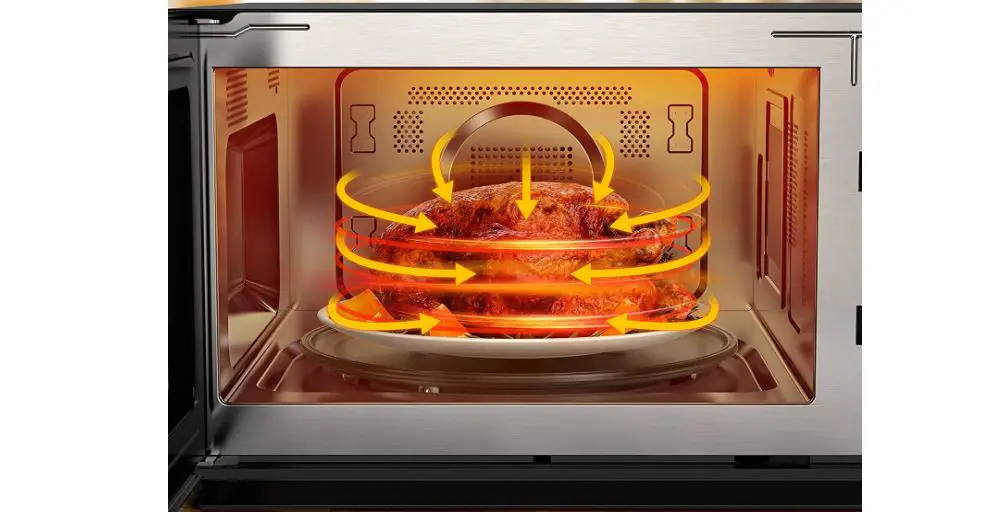
Since their introduction in the 1970s to households, microwave ovens have seen several improvements over the years.
Such advancements in microwave technology have refined the processes of reheating foods, with defrosting meat taking a few minutes.
However, If you’ve been looking to upgrade your microwave, you might have noticed that some models include a convection setting that lets you do more than just reheat food.
How does a convection microwave differ from a regular microwave?
Can you save more time with a convection microwave, and is it the perfect appliance for your home may just be a couple of questions troubling your decision to buy a microwave.
Well, continue reading as we set the record straight and help you pick the best appliance for your kitchen.
What are Convection Microwaves?
A convection microwave is a microwave that operates as a convection oven while also preserving its microwave technology.
This combination of the two kitchen appliances, microwave and convection, enables you to bake, roast, and reheat frozen foods.
To cook food while maintaining its taste and attractive texture evenly, a microwave convection oven uses an extra heating element and a fan to circulate hot air throughout the oven.
Also, thanks to their adaptability and compact size, convection microwaves are becoming popular among households with modest kitchen sizes.
How Do Convection Microwaves Work?
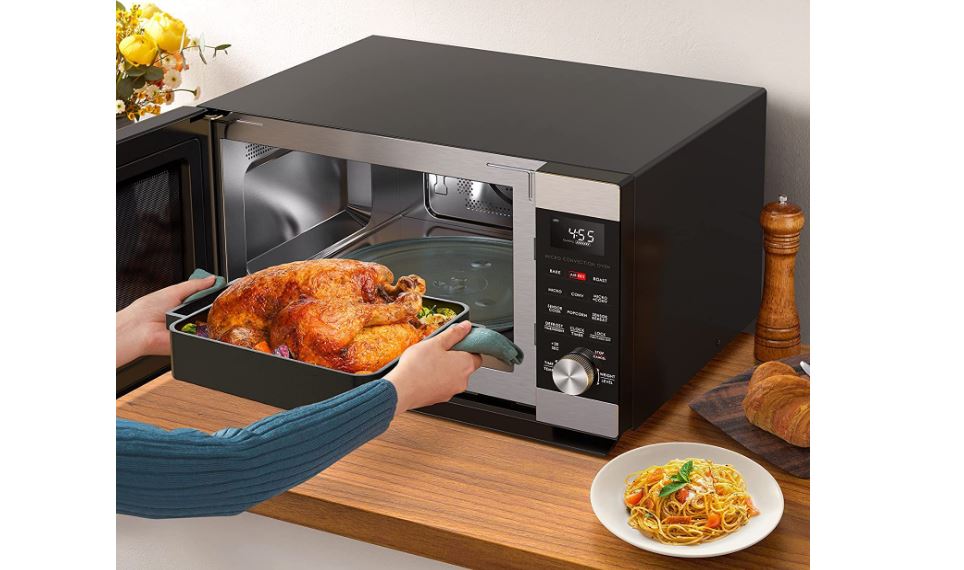
Depending on how we use it, a convection microwave oven combines the processes of a microwave oven with a convection oven.
The microwave helps to speed up the cooking process, while the convection mode helps to ensure that the food is cooked uniformly and gets nice and crispy.
When food is placed in the oven, some non-ionizing microwave radiations are emitted, reflecting off the oven’s metal surface and entering the food.
Food and the water molecules within it absorb these radiations. This causes the molecules to vibrate, creating friction and heat within the food.
In the convection section of the oven, the procedure is different as it employs a heating element and a fan to spread the uniformly. It consists of two fans positioned anteriorly and posteriorly.
These fans are situated along with the heating plates, which, when switched on, circulate hot air that contacts the food particles, cooking them uniformly.
Many modern convection microwaves offer pre-set cooking programs that switch between microwave and convection modes automatically, eliminating the need for manual switching and allowing for faster cooking of home-cooked meals.
How Are Convection Microwaves Different From Regular Microwaves?
There are two cooking settings on a convection microwave: one setting utilizes microwaves to heat and cooks food, while the other turns the microwave into a convection oven.
Because of these dual cooking functions, a convection microwave allows you to use cooking methods that aren’t possible with regular microwaves, and it also allows you to switch between the two cooking methods for increased cooking efficiency.
Are Convection Microwaves Safe?
When used correctly and kept in excellent condition, convection microwaves pose no health risks to users.
Also, many convection microwaves have an automatic shut-off option to ensure user safety further. This safety mechanism cuts power to the heating element if it becomes too hot, preventing fires and electrical burns.
Important Features
Specification(s) |
Convection Microwave |
Convection Microwave Power: |
800- 1000W |
Accessories Included: |
Grill Rack and Baking Tray |
Easy to Clean |
No |
ECO function |
Yes |
Capacity: |
25-35 Liters |
Pros of Owning a Convection Microwave
A convection microwave is a useful appliance in any home as they offer the following benefits.
1) Multifunctional
The versatility of a convection microwave, which can be used for grilling, baking, and ordinary microwave cooking, is its biggest strength.
Therefore, the device offers an efficient, quick, and easy cooking process.
2) Easily Programmable
You can easily find the sweet spot between convection and microwave cooking processes with a convection microwave’s programmable features and cutting-edge cooking modes.
The temperature can decrease or increase automatically at predetermined times during the cooking process.
Also, you can get your foods crispy by using an app on your mobile device to set the preferred texture.
3) Portable and Takes up Less Space
The popularity of the convection microwave may be attributable to the fact that it is small and lightweight, two factors that are highly valued in today’s fast-paced society.
Its portability and compact design make it an excellent choice for small counter-space kitchens.
4) Energy Efficient
Convection microwaves use far less power than most kitchen appliances, often between 750 and 1100 watts.
One major problem with most cooking appliances is their vast amount of energy; However, convection microwaves minimize energy consumption, reducing energy costs.
5) Preheats Quickly
Convection microwaves are known for their rapid preheating, which is primarily due to their space-saving design and ability to circulate heat uniformly. By speeding up the heating process, you may cut down on energy use and costs.
6) Cool Surroundings
With a convection microwave, you can kick back and enjoy making various dishes without having to fret about the kitchen being too hot. This device doesn’t dissipate too much heat and keeps the cooking area cool.
7) Budget-Friendly
According to In the Kitchen Enthusiasts Youtube Channel, convection microwaves are a great investment if you’re looking for a multipurpose cooking appliance to add to your kitchen.
More importantly, they are cost-effective in every sense of the word, from cost price to no installation costs, and they also reduce your power bill.
Cons of Owning a Convection Microwave
Some drawbacks of the convection microwave include
1) Limited Capacity
Unlike traditional ovens, convection microwaves have significantly less interior room, which is another drawback of their installation.
You can’t cook for a huge crowd or roast a whole turkey with a convection microwave.
2) Takes Time to Understand
There is a learning curve associated with using a convection microwave for cooking because of the rapid cooking time and the need to adapt recipes to the different cooking modes.
3) More expensive than regular microwave ovens.
Convection microwaves are more expensive than regular microwaves but less expensive than conventional ovens.
However, the usefulness of convection microwaves makes up for this drawback as they’re more versatile than conventional microwaves.
4) Not Ideal for Baking Bread and Cakes
While convenient, convection microwaves aren’t best for baking because the fan kills the rise in baked goods.
Even soufflés and other foods that rely on air circulation to rise will not fare well in a convection microwave.
5) Harder to Clean
Due to its many heating components, convection ovens are difficult to degrease. Depending on how your convection oven is built, the fan, in particular, might also be a pain to clean.
6) Less Durable Than Microwaves
To some extent, convection ovens are more fragile than microwaves. This is because cleaning them requires removing several components.
Best Convection Microwave Brands
The features and power of a convection microwave oven are known to be preferable to those of a regular microwave. The top five brands on the market now are shown below.
Samsung MC12J8035CT 1.2 Convection Microwave Oven

Black & Decker EM720CB7 Digital Convection Microwave Oven
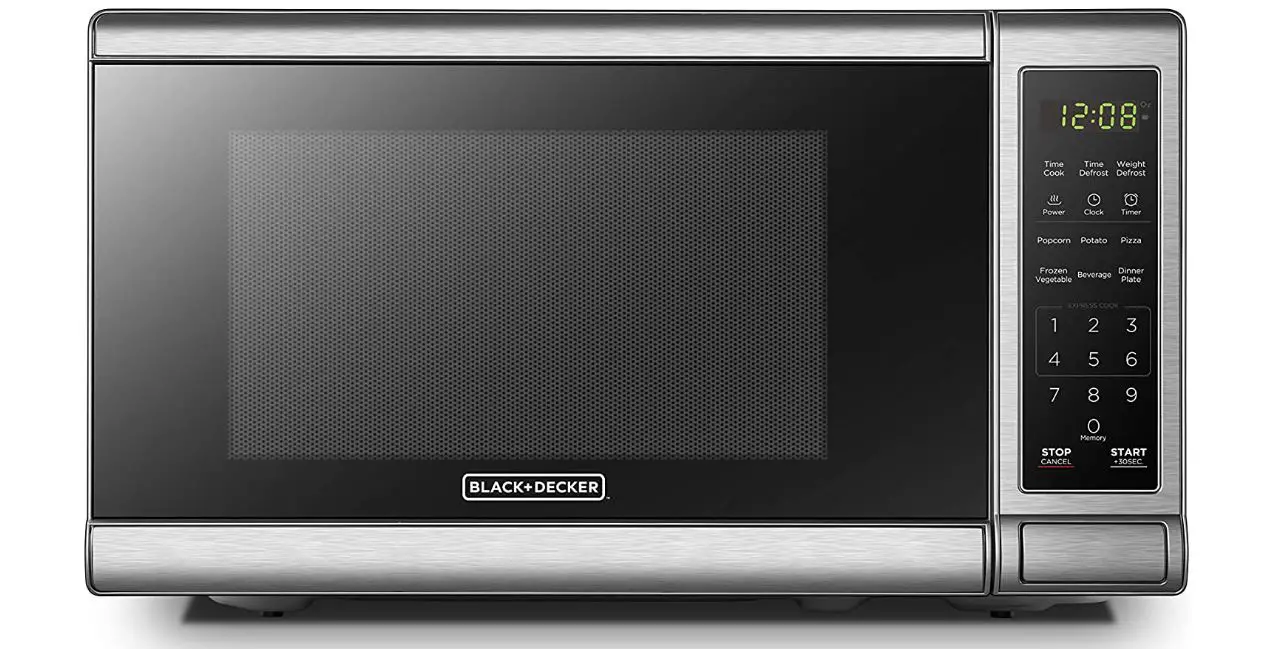
Toshiba EC042A5C-SS Convection Microwave Oven
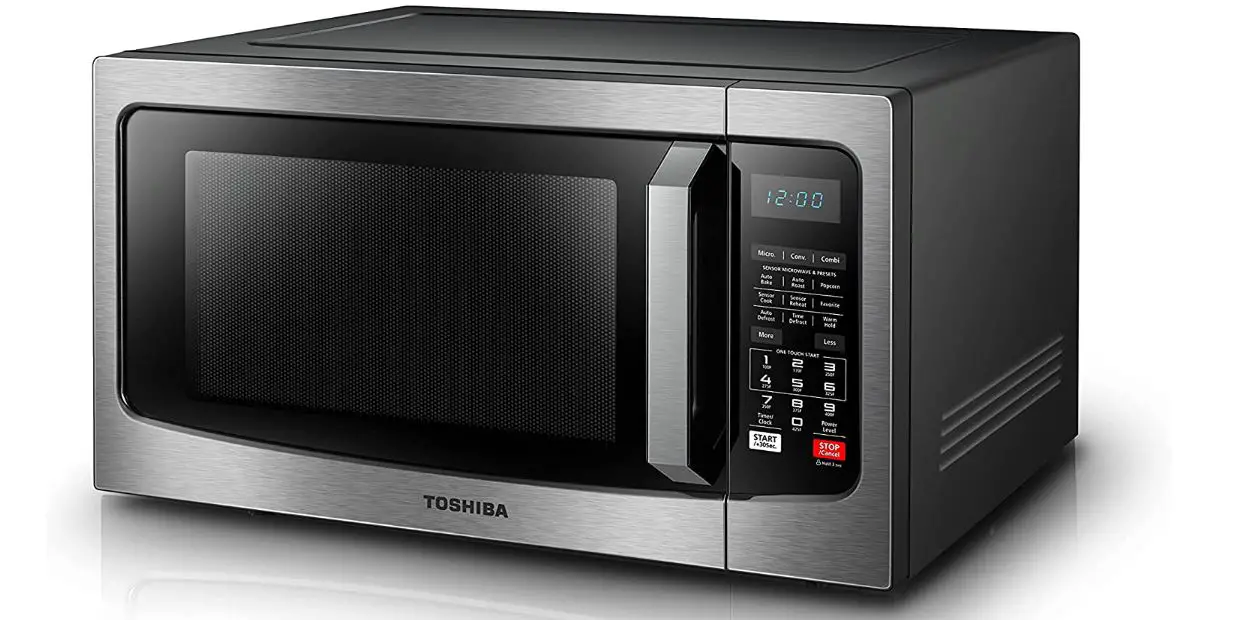
Sharp R1874T 850W Over-the-Range Convection Microwave Oven
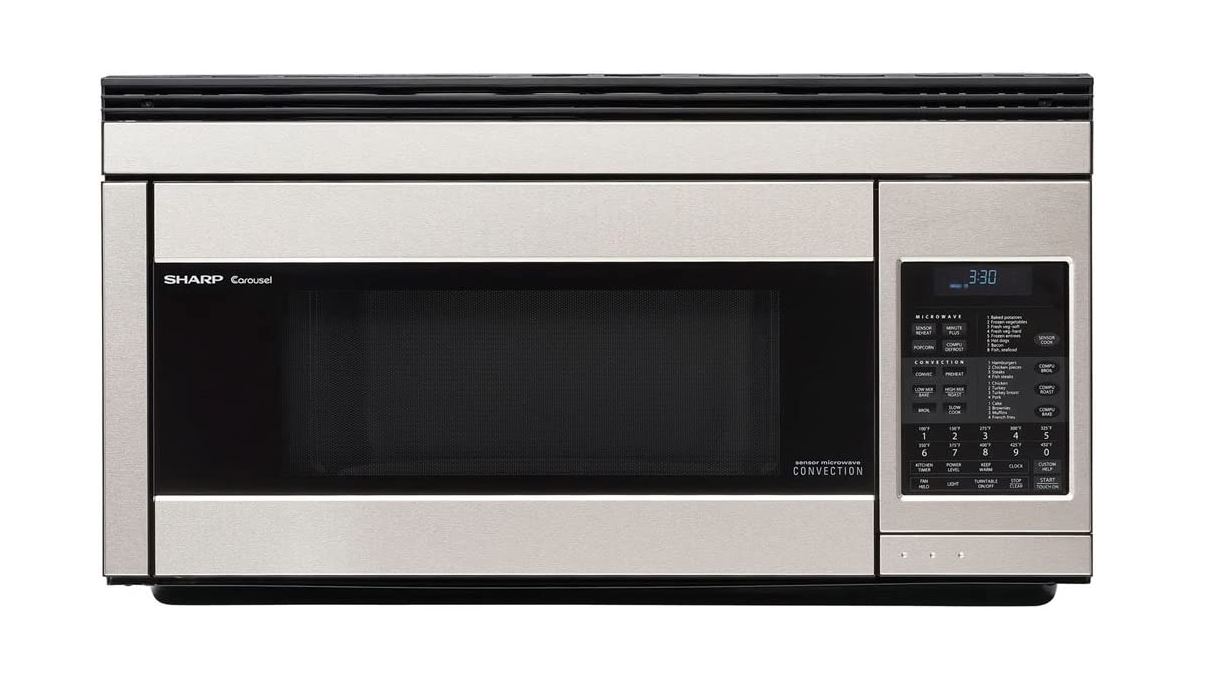
GE Profile PEB9159SJSS 22” Convection Microwave Oven
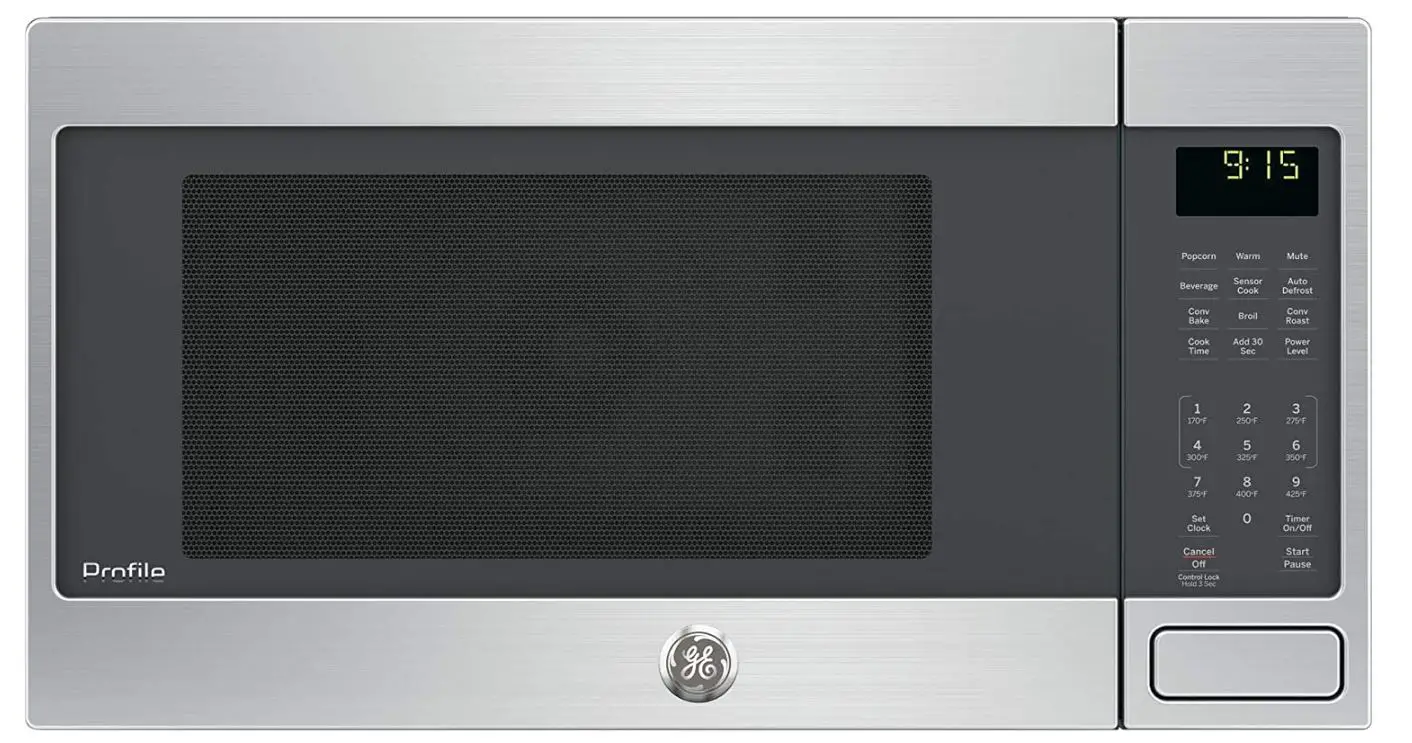
Who Should Buy a Convection Microwave?
Convection microwaves are suitable for homeowners with small kitchen spaces, as they combine two functions into one and reduce the need for ample counter space.
They’re also fantastic if you’re constantly pressed for time because of how quickly and easily you can cook what you need.
Also, If you frequently prepare large dinners with several sides, a convection microwave might be an excellent alternative to a conventional oven in situations where their installation or use would be impractical.
Convection Microwave vs. Oven
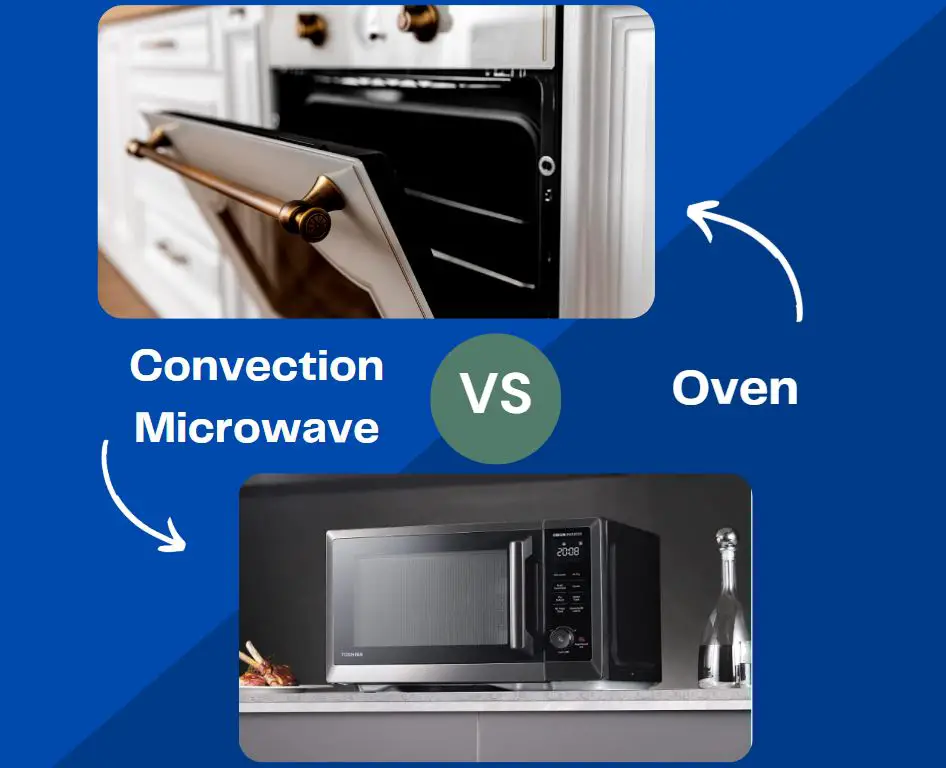
Pros of Using Convection Microwave
- Versatile
- The oven heats up in a short amount of time.
- Consumes less energy
- Perfect for compact dwellings like cabins and tiny houses.
- Cool cooking area
- Affordable
Cons of Using Convection Microwave
- Less durable
- Harder to clean
- Limited capacity
- Not ideal for baking certain pastries
Pros of Using Oven
- Prepares a lot of food at once
- Versatility in rack location
- Possible addition to a range that provides more cooking choices
- There are now potentially more viable options for fueling vehicles during a blackout.
Cons of Using Ovens
- Using more energy than necessary
- More expensive to acquire, set up, and run
- Requires more room
- Extremely uncomfortable to use in the heat of summer
Convection Microwave vs. Air Fryer
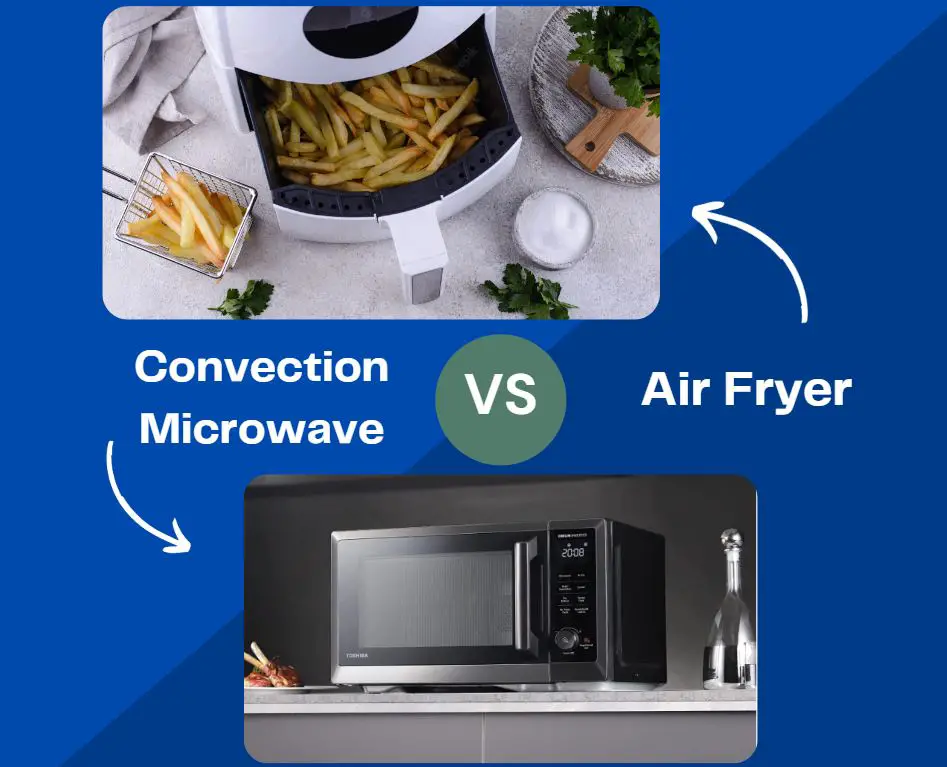
Pros of Using Convection Microwave
- Versatile
- The oven heats up in a short amount of time.
- Consumes less energy
- Perfect for compact dwellings like cabins and tiny houses.
- Cool cooking area
- Affordable
Cons of Using Convection Microwave
- Less durable
- Harder to clean
- Limited capacity
- Not ideal for baking certain pastries
Pros of Using an Air Fryer
- Normal fried dishes benefit significantly from rapid, focused heat
- Quicker cooking times since less food needs to be heated.
- Comparatively less expensive than conventional ovens
- Take up little space
- Can easily be cleaned
Cons of Using an Air Fryer
- Because of the size of the cooking basket, you can usually only cook a small amount of food at a time.
- More components to clean
Convection Microwave vs. OTG
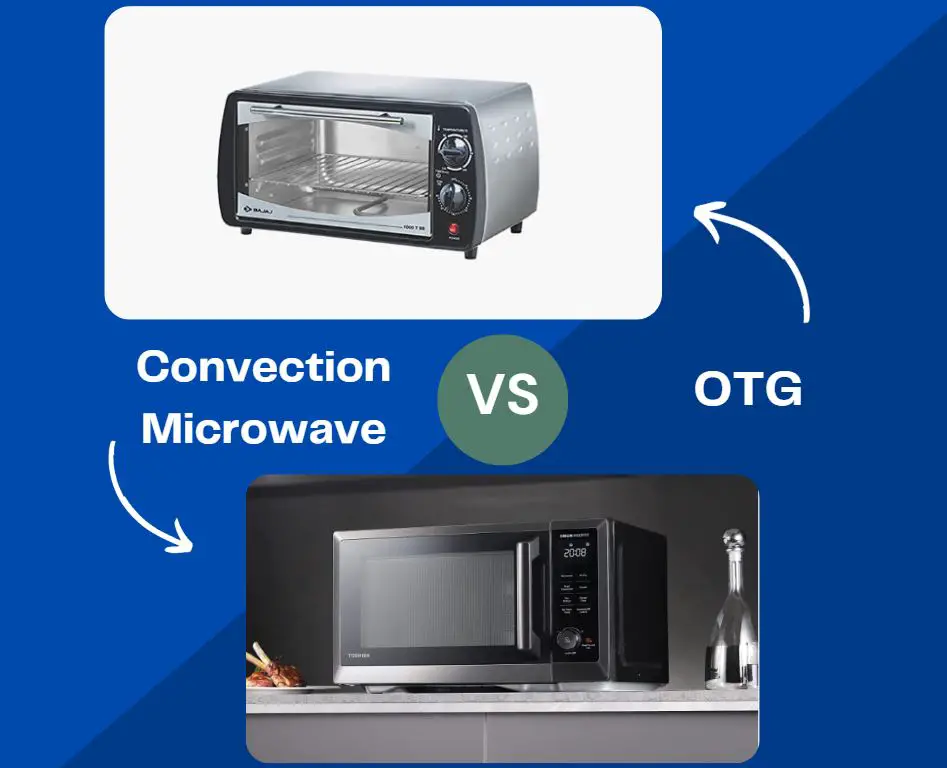
Pros of Using Convection Microwave
- Versatile
- The oven heats up in a short amount of time.
- Consumes less energy
- Affordable
- Perfect for compact dwellings like cabins and tiny houses.
- Cool cooking area
Cons of Using Convection Microwave
- Less durable
- Harder to clean
- Limited capacity
- Not ideal for baking certain pastries
Pros of Using OTG
- Compact and light
- Affordable
- Portable
- It’s ideal for baking
Cons of Using OTG
- It takes a long time to heat up because of the uneven heat dispersion.
- OTGs can’t do simple microwave tasks like warming or defrosting.
Convection Microwave vs. Toaster Oven
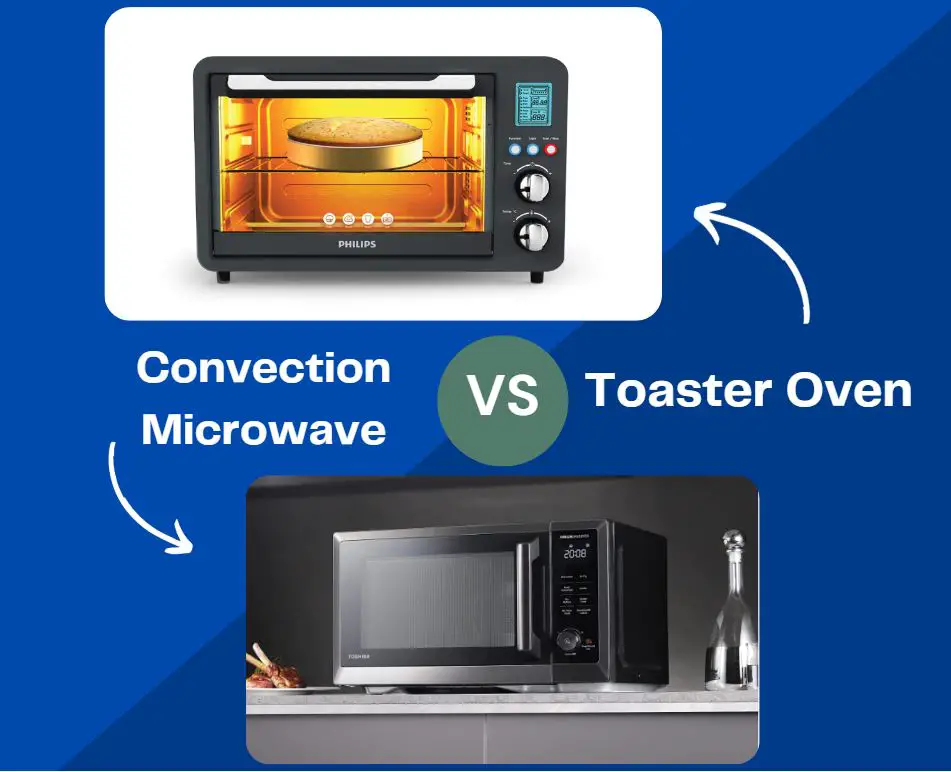
Pros of Using Convection Microwave
- Versatile
- Affordable
- Short pre-heating time frame.
- Consumes less energy
- Perfect for compact dwellings like cabins and tiny houses.
- Cool cooking area
Cons of Using Convection Microwave
- Less durable
- Harder to clean
- Limited capacity
- Not ideal for baking certain pastries
Pros of Using Toaster Oven
- It takes up less room
- Can be stored easily when not in use
- Free of charge setup
- Low-energy consumption
- Both the initial investment and ongoing expenses are reduced.
- Saves power while reheating meals
Cons of Using Toaster Oven
- rack positioning options are constrained
- Can’t make large meals at once
- Is inoperable during blackouts
- Affordable and requires no special installation
Convection Microwave FAQS

Can you use a convection microwave as a regular microwave?
Food heated in a convection microwave oven is heated in the same way as a meal heated in a regular microwave oven; that is, the water molecules in the food are heated rapidly using microwave technology.
Can a convection microwave be used as a regular oven?
By switching off the fan, convection ovens can be used as regular ovens, giving you the best of both worlds.
What can you not put in a convection microwave?
Baked goods, including cakes, bread, custards, and soufflés, shouldn’t be cooked in a convection oven.
These foods would benefit from the consistent heat, but the fan and exhaust system might lead them to cook unevenly.
What can you do with a convection microwave?
Because of their adaptability, convection microwave ovens improve your kitchen and culinary routine through the following ways:
- Reduced cooking times by combining microwave and convection techniques.
- With the convection setting, food is cooked more uniformly.
- Portability and frees up space.
Can I put metal in a convection microwave?
While metal cooking wares should not be put in a microwave, the convection mode allows you to use metal utensils like aluminum foil and baking sheets.
How much power does a convection microwave use?
The power of a microwave varies with its capacity. Larger volumes need more watts and hence more power. Typically, a microwave oven’s wattage ranges from 800 to 3000.
What voltage is a convection microwave?
A convection microwave is a 120-volt appliance.
Does convection use more electricity?
Convection microwaves save more power due to shorter cooking times.
How many hours does a microwave run?
The average lifespan of a microwave is between 1500 and 2000 hours, while some cheaper models only survive for 500.
What happens if you leave a microwave on for too long?
Most convection microwaves can handle cooking for up to 60 minutes but know that doing so puts a lot of stress on the magnetron and can reduce the microwave’s lifespan.
Also, many convection microwaves have an automatic shut-off option to ensure user safety further.
This safety mechanism cuts power to the heating element if it becomes too hot, preventing fires and electrical burns.
How long is a convection microwave safe to use?
A convection microwave can serve its purpose as long as you can properly clean and maintain the appliance.
Conclusion
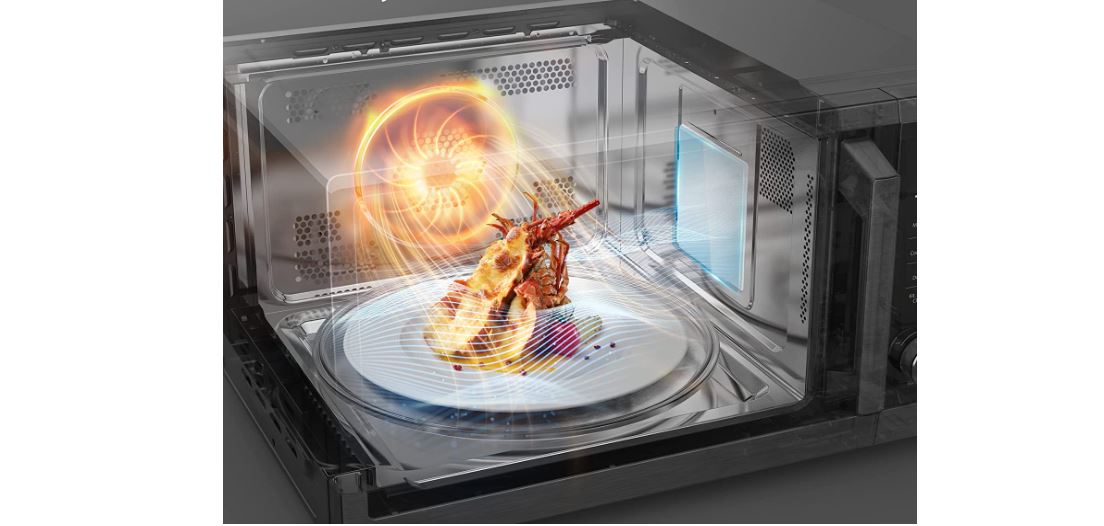
Microwave ovens were convenient for reheating, defrosting, and similar applications; however, convection microwaves pushed such functions further by allowing customers to steam, reheat, and cook brown and crisp food.
Consumers get the best of both worlds with a convection microwave oven, which combines the advantages of both a conventional microwave and a convection oven.
With a convection microwave oven, they can effortlessly reheat and thaw food and make crispy cookies all in the same oven.
So, this compact box will do the trick for you in your kitchen if you enjoy cooking but do not want to invest in a full-sized regular oven.


